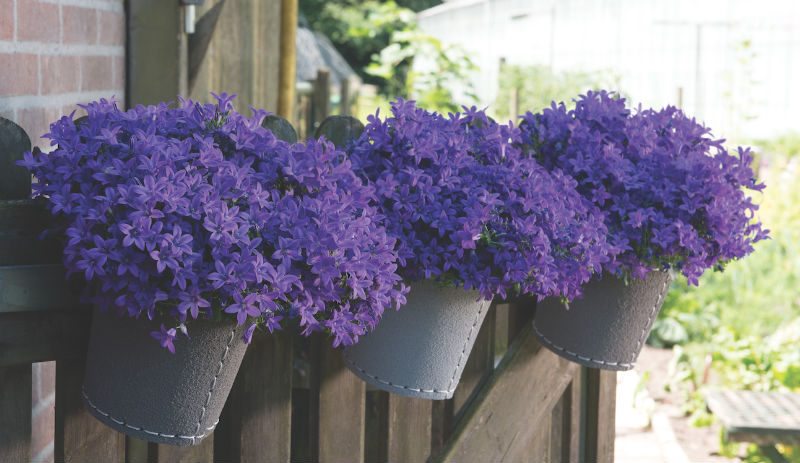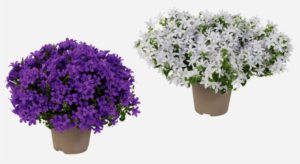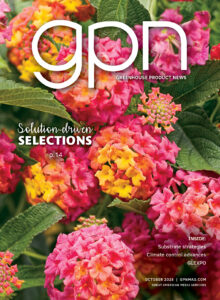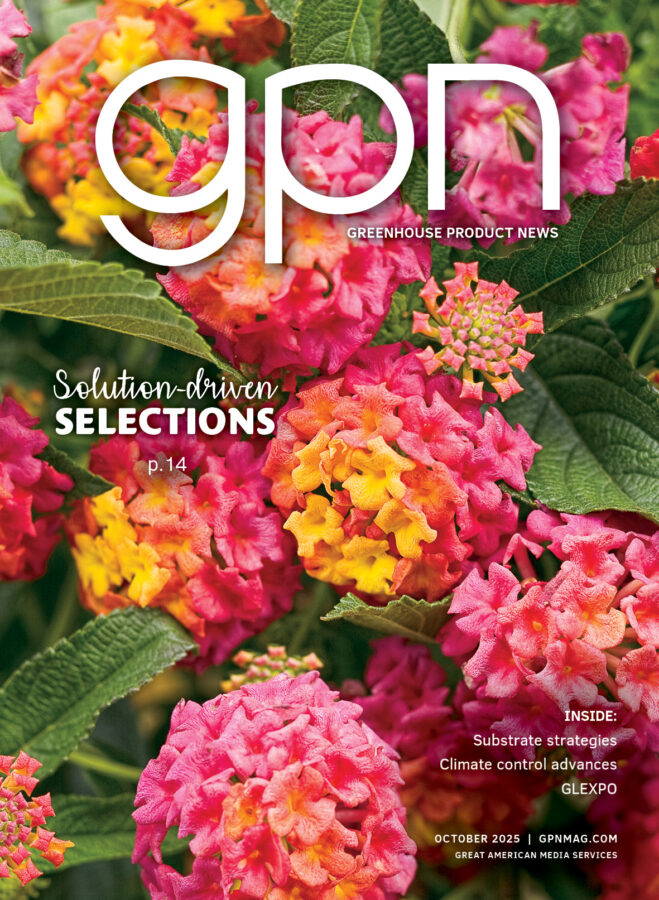
Culture Report: Campanula Adansa and Ambella Series
Campanula (common name bellflower) is fast becoming one of the most popular perennials. With its beautiful flowers and unique color spectrum, it is easy to see why.
There are several types of campanula available today. Two of the most popular series are Campanula portenschlagiana Ambella and Campanula porscharskyana Adansa.
Campanula Ambella
Introduced to the North American market by Schoneveld Breeding, these plants have an abundance of bell-shaped flowers that bloom from early spring through late summer.
This long flowering window is a terrific feature for consumers and growers alike. Due to the sturdy, compact habit, little to no growth regulators are needed for these plants. This Campanula portenschlagiana type has abundant colorfast blooms with a pleasing round shape plant.
Even though this plant is hardy and makes an excellent outdoor plant, Ambella is unique in that it also thrives in a pot indoors. This plant is terrific in 4-inch pots through gallon containers. Two colors are available: Dark Blue and White. It is hardy to Zones 5 through 9.
Campanula Adansa
Just like Ambella, Adansa is a very strong plant. This more informal campanula has long stems and star-shaped flowers. The flowering period is the same as Ambella, from early spring through late summer.
This Campanula porscharskyana has long bloom-covered tendrils, making it perfect for hanging baskets or containers. With its sturdy habit, it is also great in the landscape. Recommended pots size is 4 inch through 10 inch. Adansa is available in three colors: Purple, Pink and White. It is hardy to Zones 4 through 9.
Like most bellflowers, Adansa and Ambella are deer and rabbit resistant. With their compact size, flower power, shelf appeal and ease of production, growers should consider adding either to their spring perennial offerings.

Propagation
Campanula Ambella and Adansa are vegetatively propagated. It is recommended to grow in a paper plug.
Moisten the growing media prior to sticking the unrooted cuttings. Place the cuttings under a high misting regime for the first few days of propagation. Rooting occurs best when they are propagated under high humidity levels (90 to 95 percent relative humidity) with minimal misting. After the first few days, be mindful to avoid too much or too little misting or rooting as diseases can develop. Plastic tenting in early stages can be helpful in maintaining humidity.
It is beneficial to apply water-soluble fertilizers using 75- to 100-ppm nitrogen at each irrigation as soon as roots appear (approximately one to two weeks after sticking). Reduce the amount of misting as roots become more developed. Remove
the misting altogether once they are rooted and remain turgid throughout the day. The cuttings are usually rooted in approximately three to four weeks with soil temperatures ranging from 70 to 72° F. Liners take approximately eight to 10 weeks from sticking to become fully rooted and ready for transplanting.
Production
Campanula prefers to be grown in moist, well-drained growing media. When transplanting, the liners should be planted with one-third of the liner above the growing media of the new container.
Ideal temperature is 70-72° F during rooting and 61-64° F after transplant.
Campanula is a long-day plant. A day length of 14 hours is necessary to initiate flowering. This will also help produce more flowers. For vegetative growth after potting, maintain a short day length of 10 hours.
When transplanting weeks 48-22, short days should be as follows:
- 4-inch/quart – one to four weeks
- 5- to 7-inch – three to five weeks
- 7- to 10-inch – four to six weeks
After this period, plants should be placed under long days.
During summer production weeks 36-45, grow plants for six to 10 weeks under short day conditions. After this period, plants should be place under long days.
Fertilization
Campanula perform best when grown with light to moderate fertility levels. Growers using water-soluble fertilizers commonly provide 75- to 125-ppm nitrogen plus micronutrients with each irrigation or 150- to 250-ppm nitrogen as needed. Controlled-release fertilizers can be incorporated into the growing mix before planting using the equivalent of 1 pound of elemental nitrogen per cubic yard of growing mix or top dressed using the medium labeled rate. During production, maintain slightly acidic conditions: pH at 5.8 at 6.0.
Irrigation
Campanula should be watered in the morning. It is suggested to initially use overhead watering. Once roots are visible at edge of pot, plants should be watered from below. Keep them slightly moist, but not wet, during production. Root zones that remain consistently wet tend to develop crown and root rots. Conversely, bellflowers that are allowed to become overly dry usually have reduced quality attributes and delayed flowering. When irrigation is necessary, water them thoroughly then allow the soil to dry slightly between waterings.
Insects and Diseases
Aphids, thrips, whitefly and fungus gnats are known pests of campanula. Of these insect pests, aphids occur the most frequently and can occasionally be observed feeding on the growing tips of the newest shoots.
Botrytis and Myrothecium are the most common diseases that attack bellflowers. It is suggested to spray 10 to 12 days after potting as a preventive measure against fungus gnats and fungal disease.
Scheduling
Campanula Ambella and Adansa can be scheduled to be marketed in bloom from early spring to late summer. They are cold-beneficial plants. To obtain the most uniform flowering and the most blooms per plant, it is best to provide vernalization to either large liners or plants in the final container sizes. Additionally, plants that have been vernalized will flower approximately two to three weeks faster than unvernalized ones. When possible, it is recommended growers consider using vernalized materials for early spring shipments to allow them to produce flowering plants quicker and switch to unvernalized materials for sales later in the year. Vernalized plants grown at 65° F will flower in approximately seven to eight weeks in a 4- to 6-inch container. Non-vernalized plants will flower in 10 to 12 weeks.









 Video Library
Video Library 


















